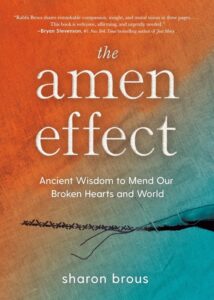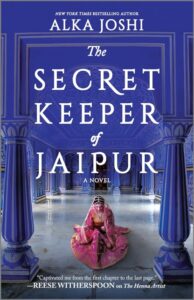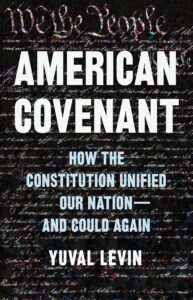You Should Have Known/The Undoing
Jean Hanff Korelitz
Grand Central Publishing, March 18. 2014
I had just finished this author‘s most recent thriller and decided to look through her other works to find my next read. Since this book has been adapted for an HBO production starring Hugh Grant and Nicole Kidman, it made the choice easy!
The main character is a marriage therapist who posits in her about-to-be-published book that “you should have known” your partner’s future behavior based on your dating interactions. The story turns on its head when something horrible happens involving her husband and she realizes she’s been fooled for many years.
Korelitz is as adept at drawing not only cutthroat private-school mothers and therapists, but also police backstories, allowing her readers to intimately understand those worlds. I know nothing about these worlds, but I feel like I’ve learned a lot. You don’t always get that from a fiction book!
The Henna Artist (The Jaipur Trilogy Book 1)
The Secret Keeper of Jaipur (The Jaipur Trilogy, Book 2)
Alka Joshi
Mira Publishing, 2020, 2021
The Henna Artist
What is unique is the book’s description of life in Jaipur, India in the 1950’s and its significance. Lakshmi escapes an arranged and abusive marriage and travels alone to the city of Jaipur where she becomes a henna artist, most often to wealthy women. The art is mostly used as a provocative design on the body and, even today, a bride is adorned with designs.
It is a time when India is trying to let loose the shackles of British rule and become independent and that is precisely what Lakshmi is trying to do.
Twists and turns, her ex-husband turns up and brings with him a 13-year-old sister, Radha, she did not know she had. We see her outlook on life versus the traditional and the young girl who is in love out of her class. To become independent is very unusual for any woman at the time no matter what her social status. She mentors a young, orphaned boy Malik. Problems arise and she must leave Jaipur for a small city in the Himalayas with a new opportunity at a local clinic.
I have been in Florida over the winter and our book club has been reading this series. I have now finished this second book which I enjoyed more than the first. It follows the life of Malik the young boy Lakshmi mentored. He has attended a British school and is quite polished. He heads to Jaipur to apprentice with the Jaipur Royal Palace who are constructing a state of the art cinema that collapses! As a boy grown up on the streets, he is suspicious and wants to uncover the truth. Only when Lakshmi becomes involved, does it all become right.
There is a third volume, which I will read SOON!
Pete’s Pick
April, 2025
The Women
Kristin Hannah
St. Martin’s Press
February 6, 2024
This book tells the difficult story of American women who served in the U.S. Armed Forces during the Vietnam War in the 1960’s and the aftermath they encountered upon returning home. It takes us through the 1970’s as the star of the novel, Frankie McGrath, deals with her issues resulting from the war experience.
Author
Kristin Hannah is an American author who grew up in California, attended the University of Washington and graduated with a degree in communications. She subsequently went to law school and practiced law in Seattle before becoming a full-time writer. This novel debuted on The New York Times bestseller list at number one in early 2024.
Story
The story begins with Frankie and her family hosting a party to see her older brother, a fresh Naval Academy graduate, off to the Vietnam War. In her father’s study, there is a wall of family heroes from all previous U.S. wars. Her dad relishes in that family history. Frankie is envious of the honor and respect family and friends are giving to her brother Fin as he prepares to ship off to war. Frankie is in school finishing her nursing degree and when she graduates, gets a job in a small hospital in San Diego. While still learning her responsibilities as a new nurse and working the night shift, Frankie encounters a patient who lost his leg while serving in Vietnam. He talks about what his experience was like in the evac hospital right after he lost his leg when stepping on a mine. He told her the nurse he had really got him through that initial tough experience. As she sat with him, she had the thought, women can be heroes.
Frankie makes the decision to go to a Naval Recruiting station to see about signing up for service as a nurse. She discovers the Navy required two years of nursing experience before signing up, So did the Air Force. The Army was the only service that permitted her to sign up and immediately ship out for training. She comes home to tell her parents what she has done, only to find them horrified. “Women don’t serve!” her dad says. Just as she gets ready to ship out for training, she learns that her brother has been lost at sea during the war.
The story follows Frankie as she arrives in country and is immediately thrust into the results of wartime combat and its aftermath. The horror of the wounds, the amputations, the burns, and the loss of life are a lifetime of experience in very short order. It turns out, Frankie has remarkable skill and is called on to use all her skills so often during the two years she served in evac hospitals in Vietnam. The story places Frankie in some of the worst battles documented during the Vietnam War. She ended up being in an evac hospital near the fighting in Pleiku during the Tet offensive in 1968. The carnage never stops. Through the experiences, Frankie makes friends with her fellow nurses and the doctors she serves with and they work to keep each other sane as they go through such tough experiences. She falls in love a couple of times and the affairs end up with the doctor being reassigned, killed, or Frankie discovers they are married. Life just goes on for her.
When Frankie’s time of service is up in Vietnam, she returns home to find a country rabidly opposed to the war in Vietnam. As evidence turns up of atrocities committed during the war and a massive coverup by the U.S. government, the sentiment against the war turns even uglier. Worse for Frankie, she begins dealing with what we now call post-traumatic stress disorder (PTSD) but was not recognized for what it is back in the early 1970’s. As she seeks to get help, no one believes she was a soldier in Vietnam. Women don’t go to war. (As it turns out, about 10,000 women did serve, most of them in the medical services.) Two of the friends Frankie made when she first arrived in Vietnam were Barb, a black women from Georgia, and Ethel, a women from Virginia who eventually wants to become a veterinarian. As Frankie continues to deal with her PTSD, she becomes more and more reliant on drugs and alcohol to take the edge off. As she descends into major depression, Barb and Ethel are there to help her through the difficult times. The story covers Frankie’s involvement in several anti-war movements and organizations designed to help war veteran’s make the transition back home. Significantly for Frankie, the world is very slow to pick up on the issues of women war veterans—women don’t serve, they say.
Ultimately, Frankie decides she needs to leave California and start a new life. She convinces Barb to go on a road trip with her. They end up driving through Montana where Frankie sees a sign for a lot for sale, 27 acres. Frankie and Bard drive through the lot as Frankie’s mind is in a whirl. Ultimately, Frankie buys the place and turns it into a retreat center for women veterans of the Vietnam War who are struggling their way out of drug and alcohol addiction and PTSD and just need a place to find themselves. The story ends with a reunion of the 36th Evac Hospital staff during the unveiling of the new Vietnam Veterans Memorial in Washington, DC in November 1982. As she goes and mingles with the many veterans, she runs into her mother and father as all three are looking for her brother’s name on the wall. And then, she runs into one of her first loves from Vietnam, a man she thought she had watched die. At last, everything just comes together for her.
Evaluation
This book was a fascinating read for me—not only for the strength of the story and the vivid descriptions of war, but because the first half of the book was very personal for me. My dad was an Army chaplain and he served in Vietnam during the period this story takes place, and served in the same place as the story takes place. He was assigned to the U. S. Army’s 1st Cavalry Division and was based out of An Khe, not far from Pleiku where much of the fighting took place that was at the heart of this book’s first half story. His letters and tapes that he sent home described much of the same story that Frankie and her friends experienced, just without all the medical gore. Dad described colleagues he lost during battles and described a lot of the countryside he flew through as he traveled to visit his troops.
The second half of the book hit me hard as well. I started college in the fall of 1970 during the heart of the anti-war campaigns taking place on college campuses around the country. When I arrived at my college in St. Paul, MN, there was a major protest taking place across the street. The 1970’s were a time when there was so much hate in our country for the Vietnam War, for the government that got us into the war, and yet very little appreciation for the soldiers who served in that war. As I watched Frankie struggle to find herself and a new purpose for her life, I remember the newscasts and newspaper articles and public conversations taking place about how the country can redefine itself and find a new sense of purpose. We’ve made progress from that time, and yet my sense is that struggle still continues. I hope you enjoy the book.
Playground
Richard Powers
W.W Norton & Company
September 24, 2024
Similar in structure to Power’s Pulitzer Prize-winning The Overstory, Playground follows three different storylines in three different timelines, centering on four characters. It is, at first, disorienting to try to figure out how these storylines will come together; fortunately, the book is so beautifully written it offsets bewilderment.
We are introduced to the primary narrator, Todd Keane, at middle age, dealing with a mortal disease. He has become a beyond-wealthy digital tycoon by creating the online game “Playground”, a virtual economy platform with billions of daily users.
In his youth, Todd meets Rafi Young, both students at an exclusive Chicago high school. Though from very different socioeconomic backgrounds, similarly dysfunctional families, and a classic left versus right-brain mentality, the two bond over their love of games—chess, at first, then the ancient Chinese game of Go. The thirty-year cross-racial friendship is sustained by fierce and constant competition.
A third character joins the two men during their college days. Ina Aroita is from Tahiti, a sculptor and artist that both men fall in love with.
The final important character is Evelyne Beaulieu whom we meet in Montreal, 1947. Evie’s father, in association with Jacques Cousteau, has invented the Self-Contained Underwater Breathing Apparatus and Evie becomes one of the first, at age twelve, to breathe and experience life underwater. She grows to become a world-famous SCUBA diver (her character patterned after the renowned Sylvia Earle), writing, teaching, and exploring the ocean’s depths for the entirety of her life. Power’s illustrations of ocean life are enthralling, even spiritual, particularly in describing the giant oceanic manta rays: thirty feet across from wingtip to wingtip, they have enormous brains, are deeply curious, will interact with humans when they deem it necessary, and, quite clearly, play.
{To be sure, this is a cautionary tale about the current and future health of the ocean. Given the depth plus the breadth of the ocean, ninety-nine percent of the inhabitable space on our planet is underwater. With humans unable to live there, our knowledge of the ocean and ocean life is significantly limited, with 80% remaining unexplored and largely unknown.}
How inappropriate to call this planet Earth, when it is clearly Ocean
—Arthur C Clarke
Powers also follows the residents of Makatea, an atoll in French Polynesia. Decimated by phosphate mining in the early 1900’s, Makatea is now being approached by tech billionaires who want to use the island as a launching pad for “seasteading” (this is not the fiction I assumed…it is a real Silicon Valley venture). The islanders must vote to allow this, choosing for or against the future and all its promised bounty. It is in Makatea that all the characters finally come together.
The connecting theme in the book is play, particularly finite versus infinite play, (A finite game played for the purpose of winning; an infinite game for the purpose of continuing the play.) We discover Powers is also playing a narrative game with us, his readers, and it takes attention to figure out what is going on.
I first “read” the book by audiobook; the ending so confused me, I bought a print copy and started over from the beginning (a testament to the pleasure of reading this book). I offer only one hint: Half of the book is in italics, and that is a key towards deciphering the twist at the end of the story.
I enjoy researching a book I am reviewing by finding and listening to author interviews, and it was especially true with Richard Powers. Playground is an extraordinary novel by an author who, in the past, has been criticized as writing “think pieces”, not novels. There is no question that Powers is awed by, and passionate about, his subjects, in this case the technological revolution that humans may be losing control over, and the majesty of the ocean.
Countering the conventional notion of human exceptionalism comes through strongly in this book, as it does in many of Powers’ books. We humans are a very small component of the “immense journey”, ancillary to the larger story of life on earth. Although reading about both the destruction of our oceans and fourth industrial revolution sounds dystopic at best, Powers suggests we move on not with a feeling of despair, but with astonishment of where we are going from here.
Playground may be confounding, but that is the beauty of it. I found myself thoroughly immersed in each of the disparate stories, well before I understood the “game”. Powers is a wizard of a writer, and I highly recommend Playground.
 Vicki’s Pick (Guest Reviewer)
Vicki’s Pick (Guest Reviewer)
February 2025
The Amen Effect
Sharon Brous
Avery Publishing, January 9, 2024
In her remarkable book, Sharon Brous highlights the social and biological need for all to be genuinely present and inclusive. She considers this to be a moral and spiritual necessity that results in a more meaningful life and a more connected and caring world.
Filled with practical guidelines and inspiring anecdotes, Brous highlights the possibilities inherent in addressing and healing the polarization, tribalism, and violence of our contemporary culture. For an in depth look at someone who has spent her career in supporting and advocating for all to embrace their “better angels” read & enjoy The Amen Effect.
American Covenant
Yuval Levin
Basic Books Publishing
June 11, 2024
Introduction
This book is a discussion of the creation of the U.S. Constitution and the changes in our political climate over the last 237 years that have affected how our government operates and how we, the people, understand our government.
Author
Yuval Levin is the director of Social, Cultural, and Constitutional Studies at the American Enterprise Institute (AEI), where he holds the Beth and Ravenel Curry Chair in Public Policy. The founder and editor of National Affairs, he is also a senior editor at The New Atlantis, a contributing editor at National Review, and a contributing opinion writer at The New York Times. His previous books include The Fractured Republic and A Time to Build. A former member of the White House domestic policy staff under President George W. Bush, he live in Maryland.
Text
As an educated political scientist used to studying pretty heavy texts on government operations, I approached this read with a curious frame of mind. I have always loved the beginnings of our country, and was recently pumped up again after reading David McCullough’s biography of John Adams. I have been concerned about the state of our country and the increasingly ineffective functioning of the U.S. Congress in the last 20 years or so. Now added to my worries are concerns about the functioning of the U.S. Supreme Court. So, I was hoping for some enlightened perspective in reading this book.
Mr. Levin does an excellent job of capturing the history of the U.S. Constitutional Convention which took place in Philadelphia beginning in 1787. He takes us through the Convention and recaps the significant issues that needed resolution in order to create a functioning central government—something the country was lacking because it was really just a confederation of 13 individual states. However, the experience of the first 19 years of our country’s existence highlighted the risk the country faced by not having a functioning central government. Yet, the challenges of reaching agreement between 13 very different state perspectives was stupefying. Mr. Levin relies heavily on James Madison’s personal notes, his journal that he kept during the Convention, to help us understand the logic and thinking that went into the compromises that were made to create our central federal government. He takes us through the various negotiations that became necessary and also explains the logic behind the various points of view that needed to be accommodated. He then gives us a perspective on the unique nature of we the people under this new republican democracy that the world had never seen before. Mr. Levin then takes us through quite a discussion as to how our environment and political culture have changed adversely in the last 50 or so years leading us into what he terms a demagoguery.
The author explores for us the concept of Federalism as it existed as a guide in forming the government in 1787, and then takes a look at each of the three branches of government. It each case, he recounts the original concept as written in the Constitution and the thought behind each branch’s purpose in our governmental operation. As he explores each branch, he is also careful to describe how its functioning has changed over the years to what is actually happening now. He also explores some thought into what changes would be necessary to take us back to the original concept of government operations our founders gave us when they gave us the U. S. Constitution and it was ratified by the States. He concludes the book with quite a discussion of the challenges that confront us if we decide to become serious about restoring government operation to the way it was originally intended.
Evaluation
As a political nerd, I was expecting some heavy duty refresher on my understanding of our form of government—and I got it. I grew up very conservative in political thought. Over my adulthood, I have found my views mellowing and even becoming more liberal. However, over the last 20 or so years, I have found myself distressed at the seeming inability of our government to work as it was designed to work. I place most of the blame on a change in political thought that seems to have overtaken those we have elected to office. Whether that change is the result of change in voters’ thinking, or is the result of politicians swaying us with a different perspective, it is almost frightening to me how "corrupt” and ineffective our government has become. As I read through Yuval Levin’s text, I found many “aha” moments to reflect on and I find myself for the most part agreeing with his evaluation of our current situation. I want to believe it is possible to fix our mess, but I sense it is going to require a new generation of politicians with a desire to return to the original concept of government for that to happen.
I found the book challenging, and yet I’m glad I read it.





